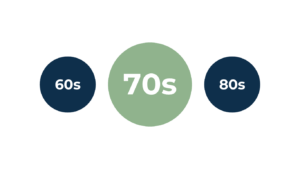
How Income Affects Medicare Premiums
Financial PlanningMay 25, 2022
You spend your whole life working hard and saving for retirement. You pay into Social Security and Medicare over the years only to find out that when it is time to use them, those assets that you’ve accumulated can affect your entitlements from those programs. Income from your assets whether through IRA withdrawals or by dividends, interest and capital gains from non-IRA assets can make your social security taxable or increase your Medicare premiums. This post will focus on the Medicare side.
The Medicare Income-Related Monthly Adjustment Amount (IRMAA) is an increase in your Part B or Part D premium if your income exceeds a certain level. The IRMAA is calculated using the income you reported on your tax return two years prior. Furthermore, your Modified Adjusted Income (MAGI) is used, which means that it is your income before you take any deductions. It is worth noting that Roth IRA distributions are not included in MAGI. The table below from the Medicare website highlights the income levels for 2025:
If your yearly income in 2023 (for what you pay in 2025) was:
| File individual tax return | File joint tax return | File married & separate tax return | You Pay each Month (in 2022) |
| $106,000 or less | $212,000 or less | $106,000 or less | $185 |
| above $106,000 up to $133,000 | above $212,000 up to $266,000 | Not applicable | $259 |
| above $133,000 up to $167,000 | above $266,000 up to $334,000 | Not applicable | $370 |
| above $167,000 up to $200,000 | above $334,000 up to $400,000 | Not applicable | $480.90 |
| above $200,000 and less than $500,000 | above $400,000 and less than $750,000 | above $106,000 and less than $394,000 | $591.90 |
| $500,000 or above | $750,000 and above | $394,000 and above | $628.90 |
Let’s look at an example:
A married couple files jointly and has a combined Social Security income of $50,000 annually. Their non-qualified account generates dividend income of $100,000 and municipal bond interest of $35,000. On top of that, they have RMD’s from their IRA’s totaling $75,000. Their total MAGI is $260,000, which would make their monthly premium $259. They are very close to the next level of $266,000 so that is something for them to be mindful of in future years.
There are many considerations after looking at that example. The first is to make note that it looks back two years meaning any action they take to mitigate premium increases will take effect in two years. Should they consider a conversion to a Roth IRA? Do they need all the income that their non-qualified account is generating? If not, is it time to start gifting some of the dividend stocks? Like all financial decisions, it depends on their situation and their goals. Does it really matter to them? Maybe, maybe not.
At the end of the day, it is a good problem to have. You can explore different ideas to minimize taxes on Social Security or Medicare premiums paid. However, these consequences are a result of having built enough wealth to sustain a long, comfortable retirement. If you are fortunate enough to be in the position to have these problems, enjoy it and let the professionals in your life do their jobs to minimize the negative effects.


